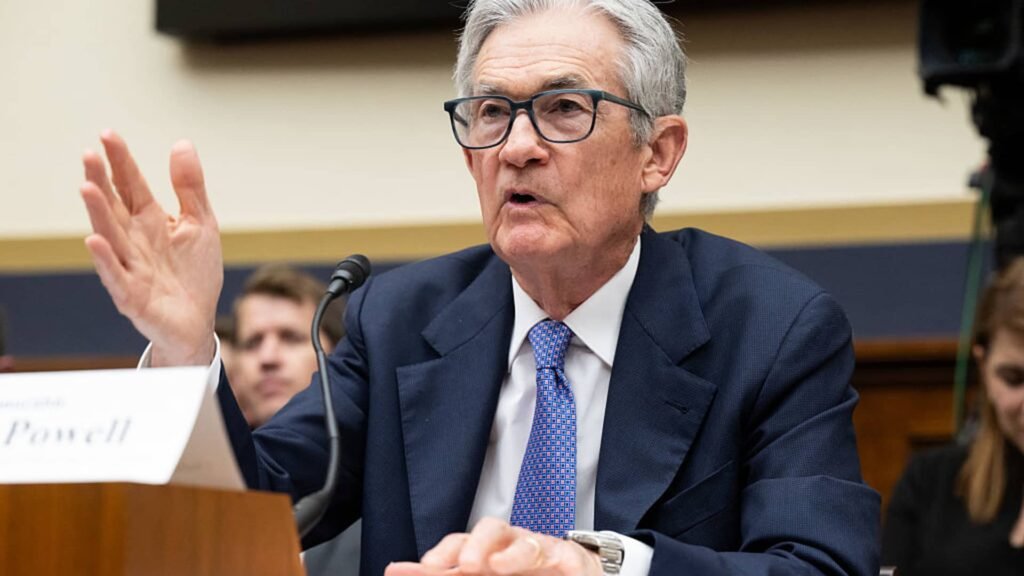Jerome Powell, the Chair of the US Federal Reserve, spoke during a House Financial Services Committee session regarding the “Federal Reserve’s Semi-Annual Monetary Policy Report” on Capitol Hill in Washington, DC, on June 24, 2025.
Saul Loeb | Afp | Getty Images
On Tuesday, Federal Reserve Chair Jerome Powell reiterated the bank’s dedication to controlling inflation. He mentioned that he anticipates that policy changes will be on hold until the effects of tariffs on prices become clearer.
In his statements prepared for two congressional committees this week, Powell described the economy as strong, noting that the labor market is approaching full employment.
Nevertheless, he pointed out that inflation remains above the Fed’s aim of 2%, and the effects of tariffs imposed by President Donald Trump are still uncertain.
“Policy changes are evolving, and their impact on the economy is still unclear,” Powell commented. “The effects of tariffs will depend on various factors, including their final level.”
In what has become familiar phrasing from him, Powell mentioned that policymakers are “well positioned to wait and gather more information about the economic outlook before making any policy adjustments.”
This cautious approach may further irk Trump, who has been increasingly vocal in his criticism of Powell. In his latest comments shared on his Truth Social platform, Trump expressed his hopes that “Congress really deals with this stubborn person.”
Powell’s comments, along with the Fed’s monetary policy report, will first be presented to the House Financial Services Committee on Tuesday morning, followed by the Senate Banking Committee the next day.
Inflation anticipated to rise
Much of Powell’s speech consisted of standard terminology he usually employs to describe the economy, which he characterized as “solid,” a term he also used for the labor market.
However, he projected that the Fed’s preferred inflation measure could rise to 2.3% in May, while the core measure, which excludes food and energy, might inch up to 2.6%. In April, these figures were recorded at 2.1% and 2.5% respectively.
Historically, tariffs have led to one-time price hikes and have rarely been responsible for sustained inflationary pressures. Powell stated that he and his colleagues on the Federal Open Market Committee (FOMC) will weigh this balance carefully and do not feel rushed to revise policy until further data regarding the impact of tariffs becomes available. The FOMC is responsible for setting interest rates in the central bank.
“The FOMC’s duty is to maintain longer-term inflation expectations and to prevent a temporary price rise from developing into a long-term inflation issue,” Powell explained. He emphasized that the Fed aims to balance its dual mandates of achieving full employment and low inflation, noting that “without price stability, we cannot maintain the strong labor market conditions that benefit all Americans.”
Last week, the FOMC unanimously decided to keep interest rates steady.
However, an update to members’ future expectations — referred to as the “dot plot” — showed differing opinions among members. Nine of the 19 officials preferred either no cuts or one cut this year, while eight supported two cuts and two anticipated three. The dot plot is anonymous, preventing any identification of individual perspectives.
Recently, two significant FOMC voters, Governors Michelle Bowman and Christopher Waller, indicated their support for a rate cut in July if inflation data remains stable. The consumer price index rose by only 0.1% in May, reflecting other indicators that show low price pressures so far from tariffs.
Market forecasts suggest a mere 23% likelihood of a rate cut at the meeting set for July 29-30, with a much greater chance of a reduction occurring in September, according to the CME Group’s FedWatch tool.


